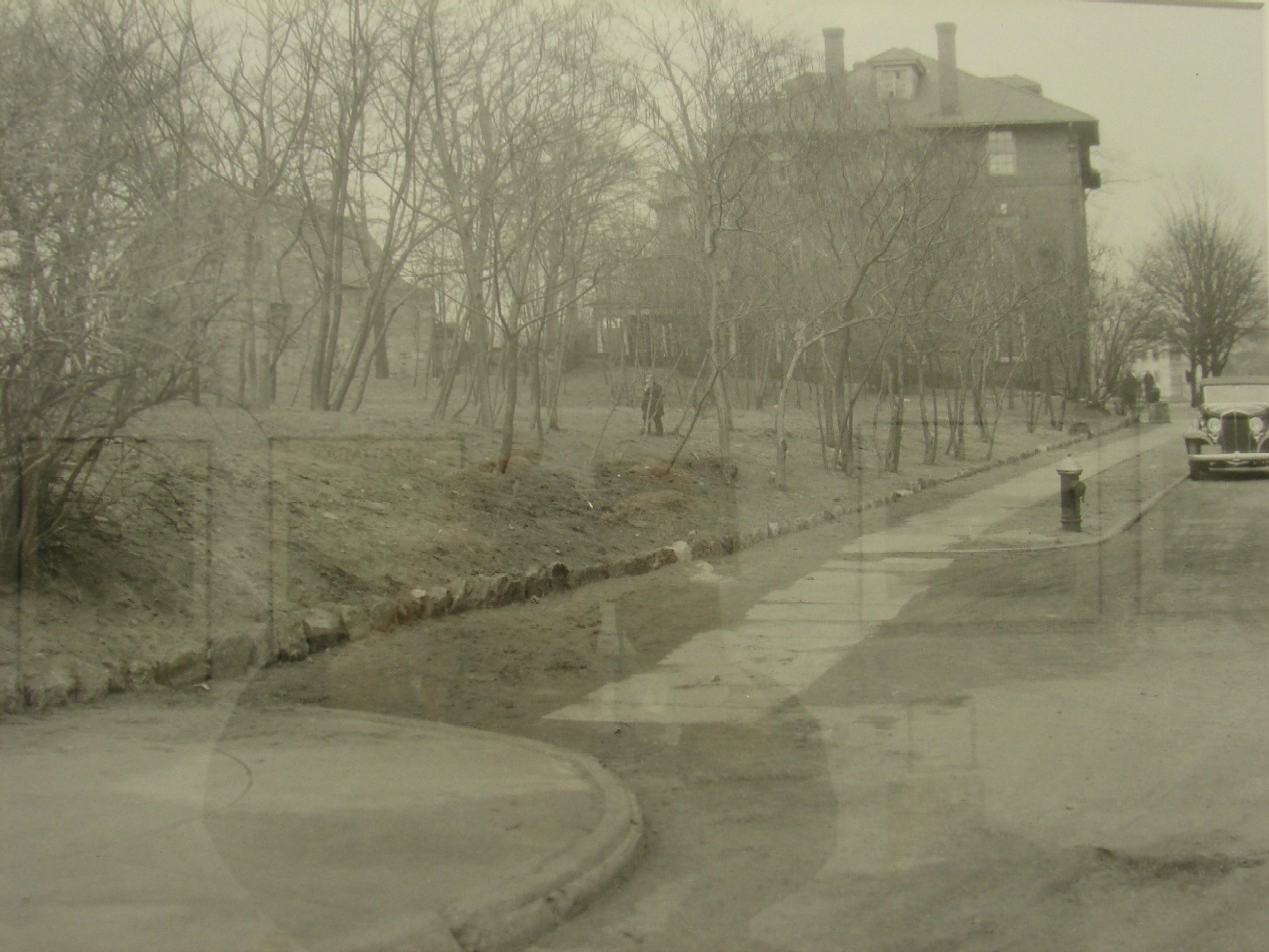530 West 215th Street at Park Terrace East
Many people, some who’ve lived in the neighborhood for years, often ask me, “What’s the deal with the beautiful bricked up building next door to the Northeast Academy School?”
Well, here’s the deal:
The property, which sat across the street from the old Seaman Mansion, was purchased in 1910 by William H. Hurst. A wealthy man, Hurst made his fortune as as president of the Stock Quotation Telegraph Company, which supplied stock ticker equipment to financial firms. A year after purchasing the property, Hurst would serve as jury foreman in the famous Triangle Shirtwaist Factory fire in which some 146 garment workers, mostly young girls, were killed. The lethal inferno remains the deadliest industrial accident in New York City history.
If the architecture looks institutional in style, it should. Built by architect James O’Connor in 1912 , the home served as the private residence of William Hurst, his wife, Minnie, and their ten children. Like the current south-north migration, Hurst moved his large family to Inwood to escape the cramped quarters of their former West 80′s townhouse.
Mr. and Mrs. Hurst would also require extra living quarters for their servants.
According to the New York Times, “The 1925 census return shows him in the house with his family, four female Irish servants and Alex Setchof, a 22-year-old Russian chauffeur. All five of the staff had been in the United States for only a year.
In 1921, a butler, James J. O’Brien, sued Hurst because he was bitten by the family poodle on the lawn while serving tea. Mr. O’Brien wanted $2,000, and said that Hurst had pressured him to settle for only $25; it is not clear how the case was resolved.”
While little has been written about the lives of the Hurst family–a writer named Robert Emmet Ireton dedicated his 1909 book, A Central Bank, to “William H. Hurst, President of the Stock Quotation Company, Treasurer of the New York News Bureau Association, Loyal Friend and Citizen…as a Token of Esteem, Regard and Respect.”
Old newspaper clippings also tell us that the family placed an advertisement in 1917 seeking the services of a private nurse. Perhaps one of their ten children suffered some chronic malady?
Old newspaper clippings also tell us that the Hurst family lost a daughter in 1925 and that the funeral mass was held inside Good Shepherd Church, just down the street from the family home.
The family would be rocked by another tragedy when Minnie Hurst, who had mothered ten children, died in January of 1929. Like her daughter before her, Minnie’s funeral was held at the Church of Good Shepherd. There was likely not a dry eye in the house.
Hurst himself would die less than two months after his wife’ s passing.
After Hurst’s death in 1929, according to the New York Times, the property was sold and the brick building, with terra cotta detailing, was converted into a convent. In 1946 the grounds were expanded to create the Garrard School of the Academy of the Sacred Heart of Mary.
A local resident who attended the school in 1964 described life there in a neighborhood forum. “The entrance way was a grand style with black and white tiles, a crystal chandelier and symmetric winding staircases to the second floor. To the left of the staircase was a sunroom which was used as a sacristy for the chapel. On the first floor there were two sitting rooms on each side of the entrance. Opening into the lager area a chapel on the right and a classroom on the left (front hall like a T shape).
Upstairs another grand entrance way with the classrooms surrounding it. All rooms with fireplaces and sunshine. Some rooms were painted light blue and some light yellow. Mantels were white. On the third floor were the nun’s quarters. One died up there so there could be a ghost. We heard rumors of terrible things that went on up there. We had quite an imagination.
In the basement were the kitchen and a room to eat. Not a full cafeteria style. There was a nun that was one of the lesser orders of the RSHM and she was called “sister”, as opposed to “Madame” which (is what we called) the teachers.
We learned and spoke French. All prayers were in French and we had to curtsey in a sweeping style bringing one leg out in a ballet motion and bow with skirt held. Meeting a nun in the hallway to curtsey was difficult when you had a full load of books in your arms.”
The school closed around 1969, and in 1974 the Northeastern Conference of Seventh-day Adventists bought the old Hurst house as well as the property next door, 632 West 215th Street, for a new school, Northeastern Academy.
Unfortunately, Mr. Hurst’s former home, which had fallen into disuse, was gutted by a fire set by vandals in 1988 and has been bricked up ever since.
And…as often happens when digging through history, one often finds something unexpected.
According to 1936 newspaper advertisement, the family of William La Morte lived in a home where Northeastern Academy now stands—Their house was built in 1925 and boy did they like their carbs.







